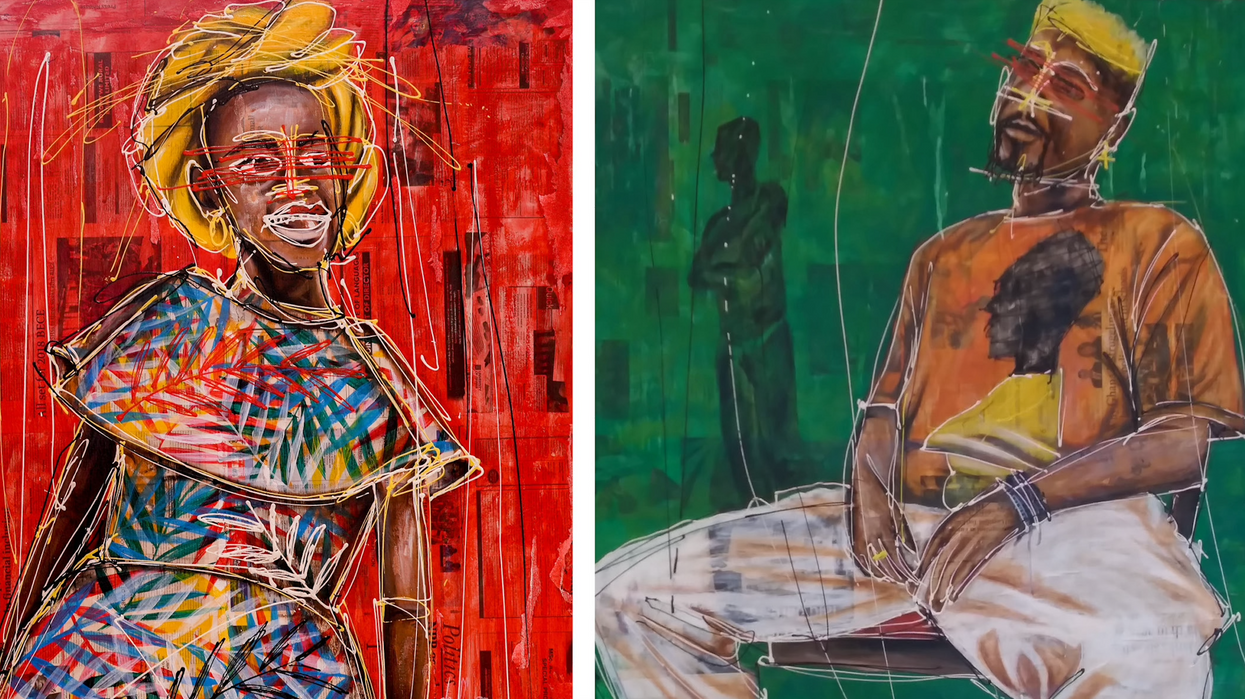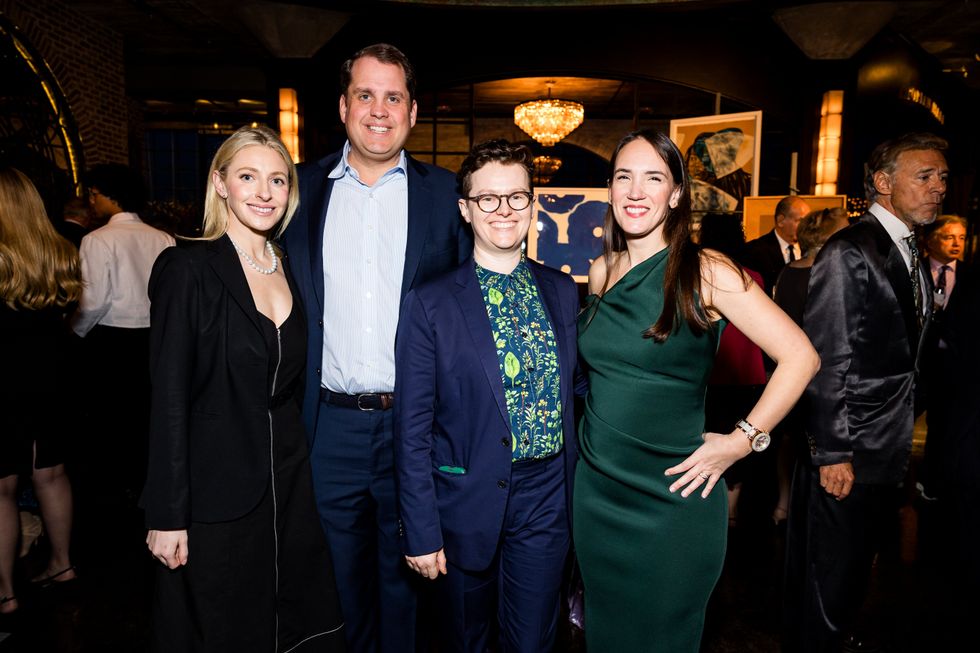Ghanaian Street Artist Showcases ‘Spirited’ Portraits in First U.S. Show

Kingsley Kofi Deffor's 'Pretty Lady' and 'Go and Ask the Boss' (photos by Chris Becker)
FEELING THE STRESS of the holidays? Need to take a pause? Head over to Montrose to the recently opened Art Is Bond gallery and check out Heard and Seen, a spirited, dare we say life-affirming exhibit of acrylic and mixed-media portraits by Ghanaian artist Kingsley Kofi Deffor, who also goes by the handle Deff Art. This is Deffor’s first show in the U.S., and there are just a few more weeks to see it before it closes Jan. 31.
Inside the cozy vibe of Janice Bond’s ground-level, sunlit gallery space, Deffor’s portraits of Ghanaian street life reveal layers of detail and range of emotional content, though the overall mood is one of pride and positivity. More than a few of his subjects are smiling or laughing.
Born in 1985 in Accra, Ghana, Deffor endured a tough childhood. His commitment to and passion for making art was more often than not met with derision, and even physical violence. A child of hip-hop music, fashion, and culture, including graffiti, which all found its way to Ghana in the mid-1990s, Deffor went on to formally study visual arts and design, and now manages a career as both a painter and street muralist. He’s created art for companies and institutions, including Adidas Ghana, Harley Davidson Accra, and the Embassy of Mexico, and participated as a graffiti artist in street festivals across Accra.
Heard and Seen showcases Deffor’s most recent figurative work, with Harlem Renaissance master Herbert Gentry and Jean-Michel Basquiat namechecked in the press release as influences. But whereas Basquiat’s depictions of the human form are often frightening, with veins, inner organs, and skeletons exposed, and his mostly male subjects looking as if they were in the process of being X-rayed, electrocuted, or vaporized, the individuals in Deffor’s portraits are translucent, but never appear to be in distress or discombobulated. These are rugged, dignified people, each painted on a canvas layered with multilingual newspaper copy, cartoons, and advertisements, a collaging technique used in surrealism and cubism and to paper the walls of Afro American and White Appalachian cabins throughout the slave- and Depression-era deep south. In his research into West African art and spirituality in the Americas, Robert Farris Thompson identifies this “interrupted patterning” as a very old method for disorienting and warding off evil spirits. Interestingly, in a recent live-streamed conversation with Bond, Deffor described a strange dream he had in which an unidentified adversary sternly told him to put down the newspaper he was attempting to read and get back to painting.
Sprits and artspeak aside, Deffor’s portraits are engaging, sometimes mysterious, but always firmly grounded in the street. Heard and Seen is a welcome opportunity for Houstonians of all ethnicities and skin tones to experience just a bit of what is emerging artistically and culturally out of Accra, and revel in Deffor’s genuine enthusiasm and love for the everyday people of his hometown.

- December Is Here! Ring in the Season at Six Holiday-Happy Events this Weekend ›
- For These Artists, the Ear Is as Essential as the Eye ›
- Andy Warhol’s Evolution as an Artist Spotlighted in New Downtown Exhibit ›
- On Main Street, United Nations Unveils First-Ever ‘Ecosystem Restoration’ Mural Designed to Grow More Trees - Houston CityBook ›
- A Gallery Should Be About More Than Buying and Selling Art, Says Newly Minted Gallerist Janice Bond - Houston CityBook ›
- A Self-Taught Artist Hangs a Solo Show to Inspire Everyone - Houston CityBook ›
- This Weekend: Check Out These Intricate, Puzzle-Like Collages Packed with Personal and Societal Anecdotes - Houston CityBook ›











